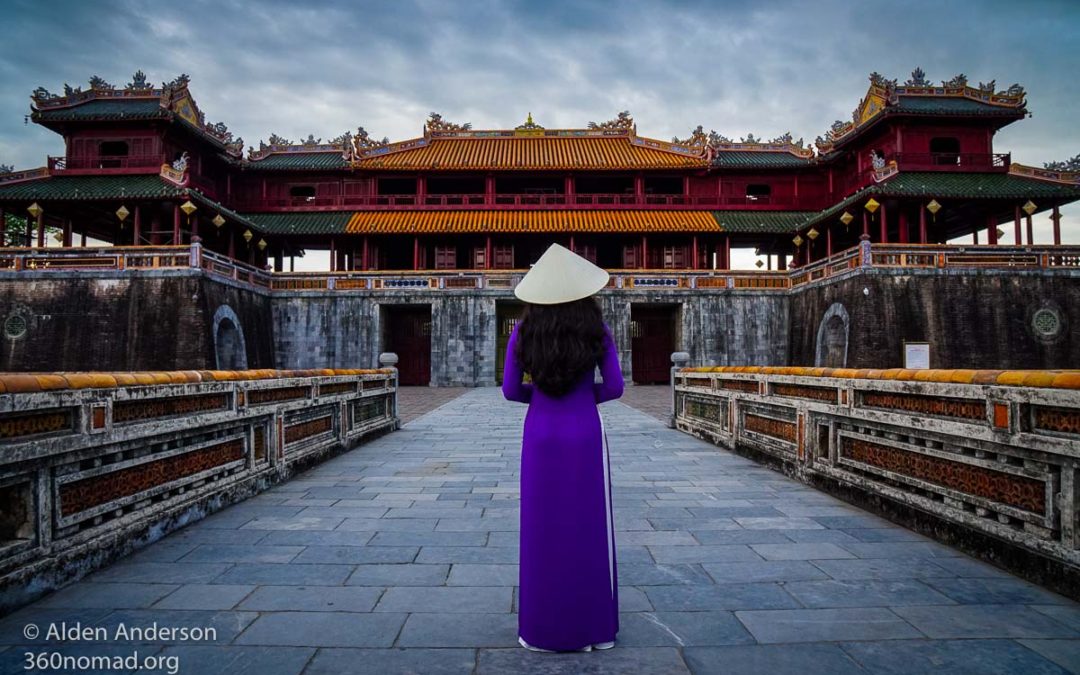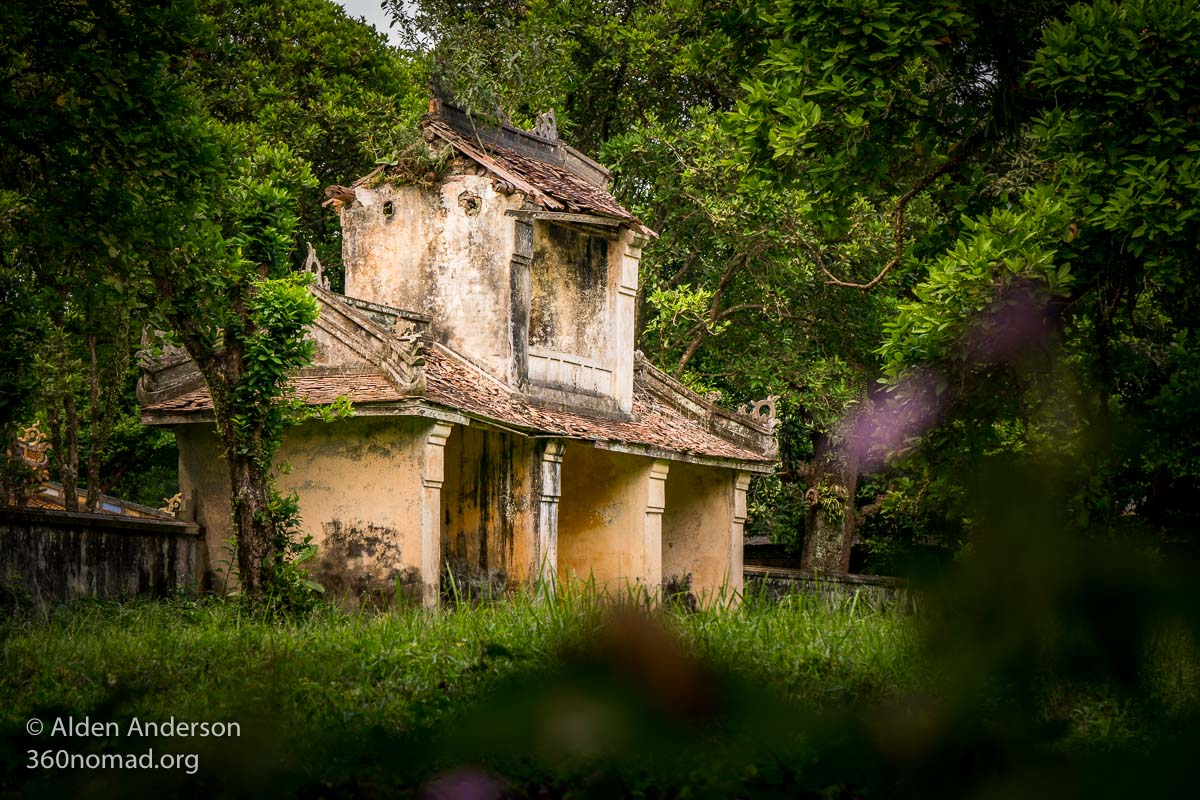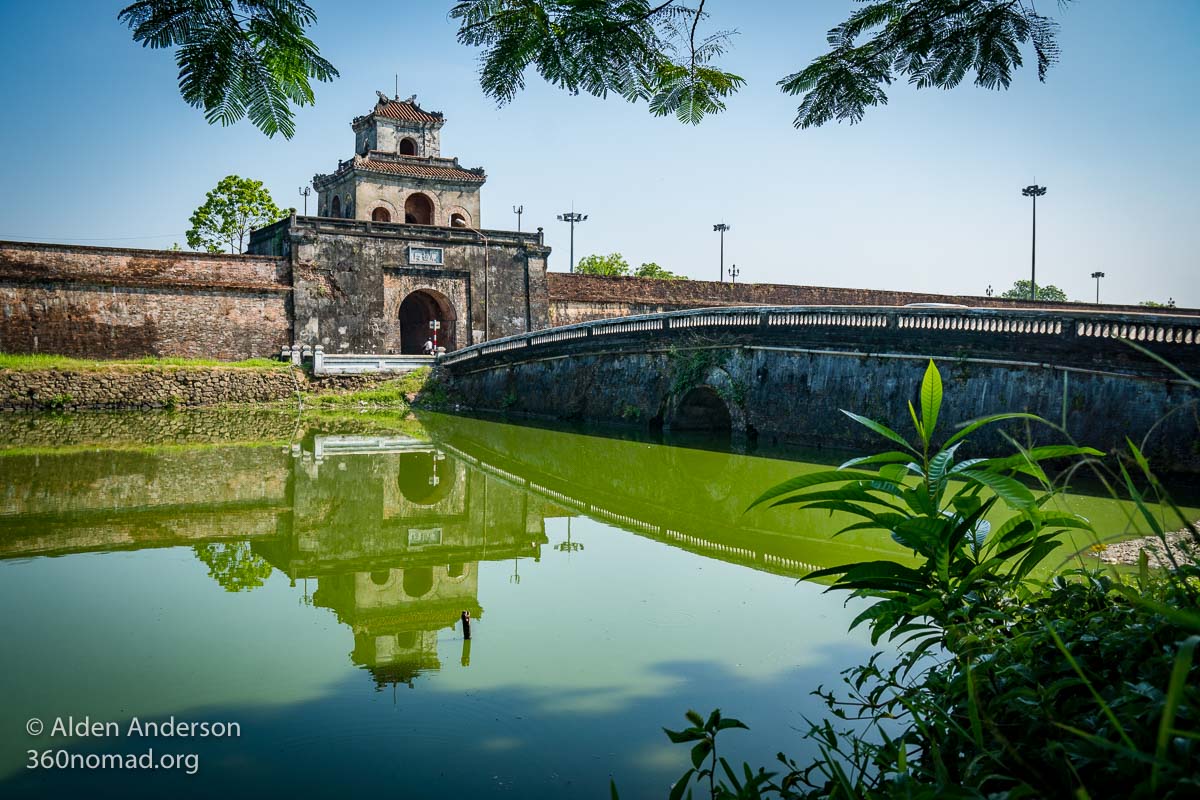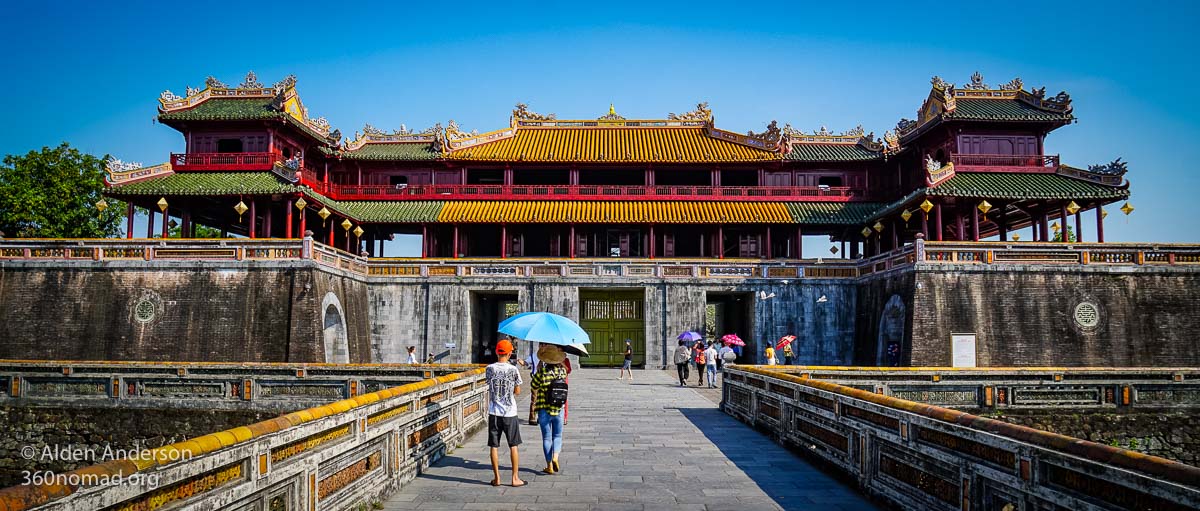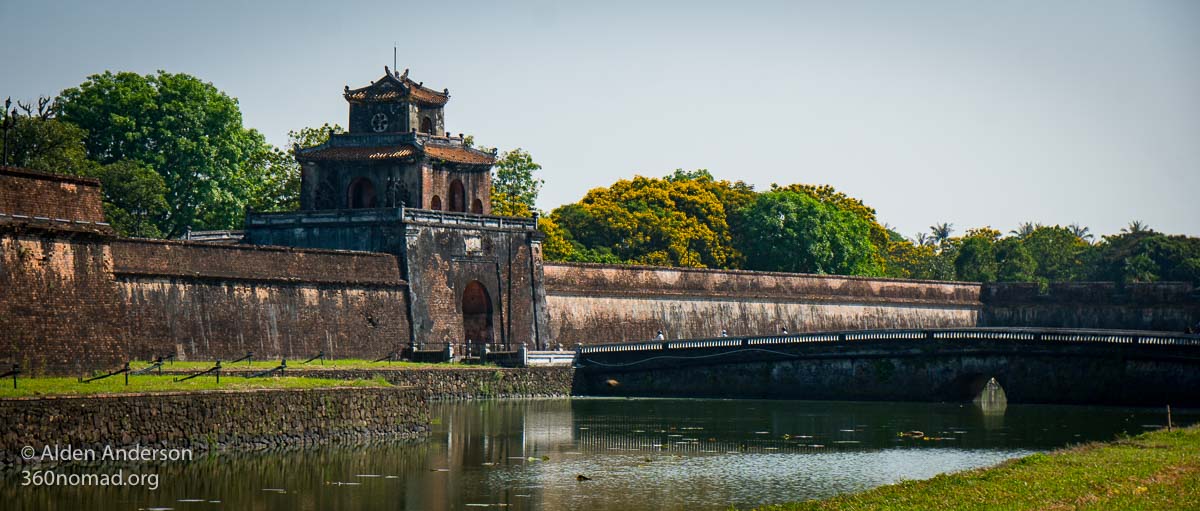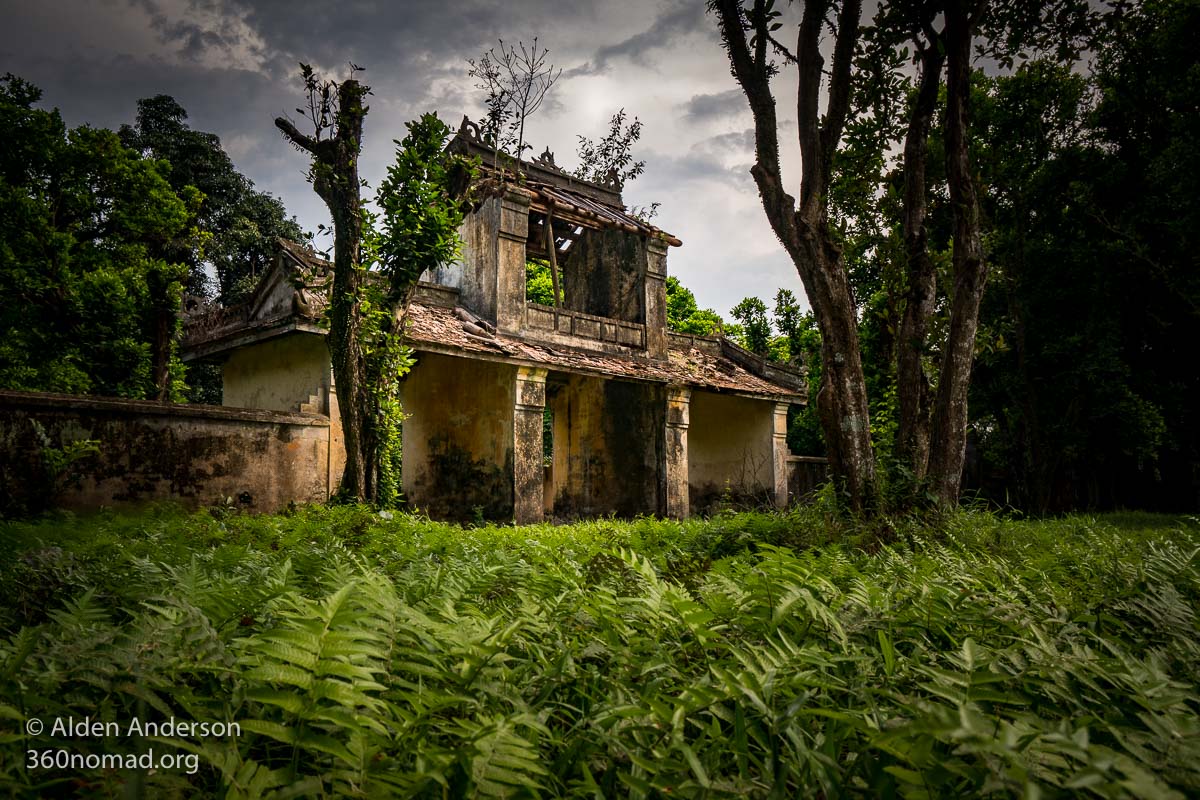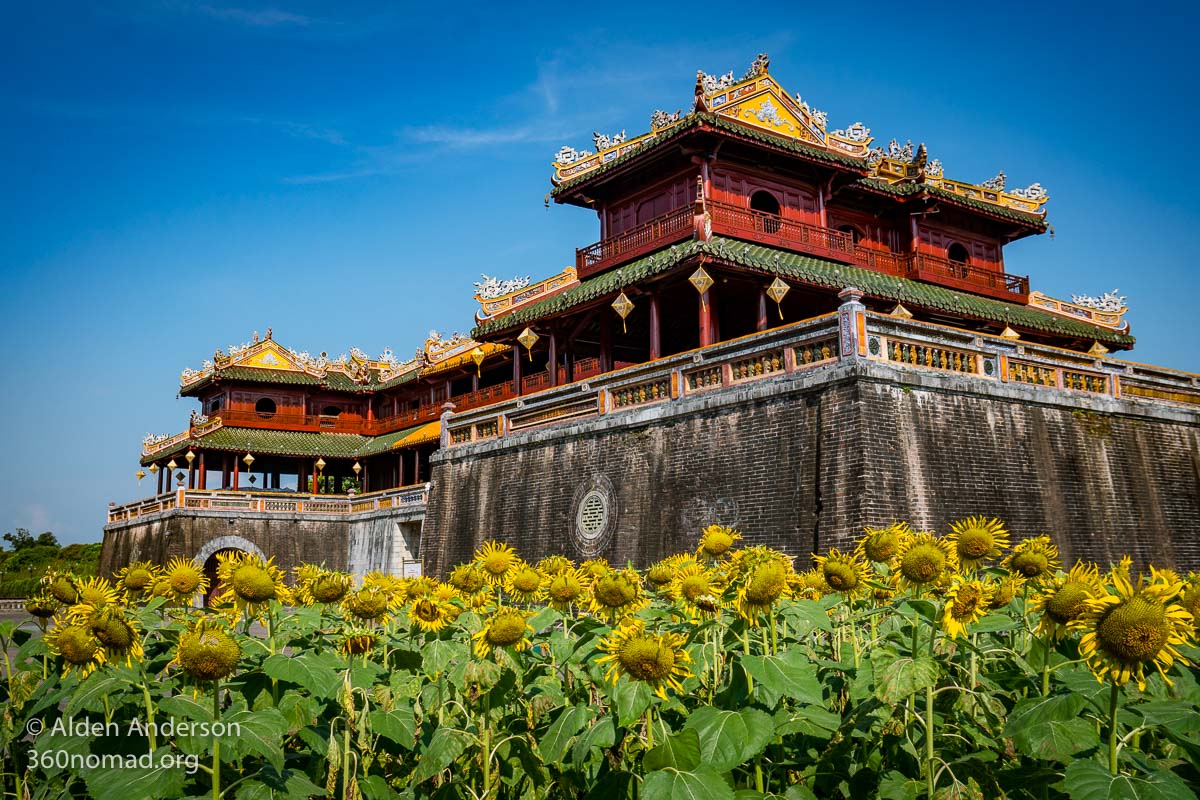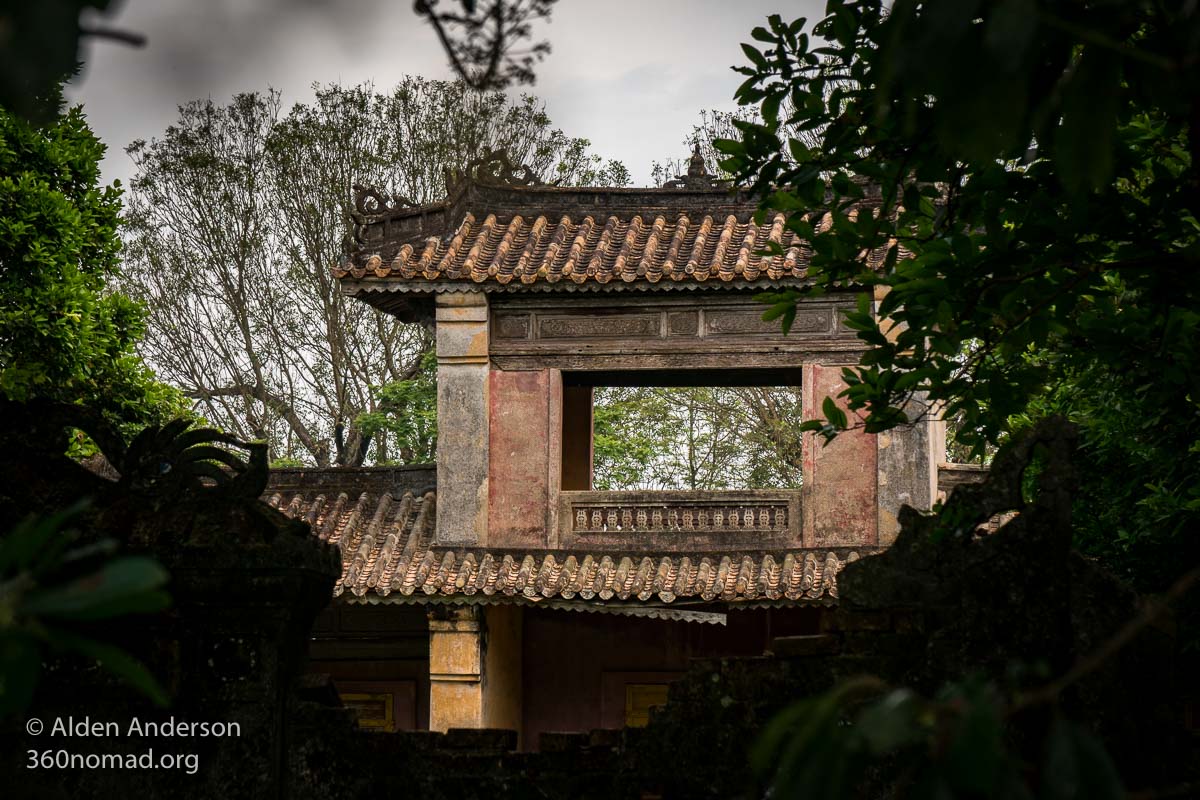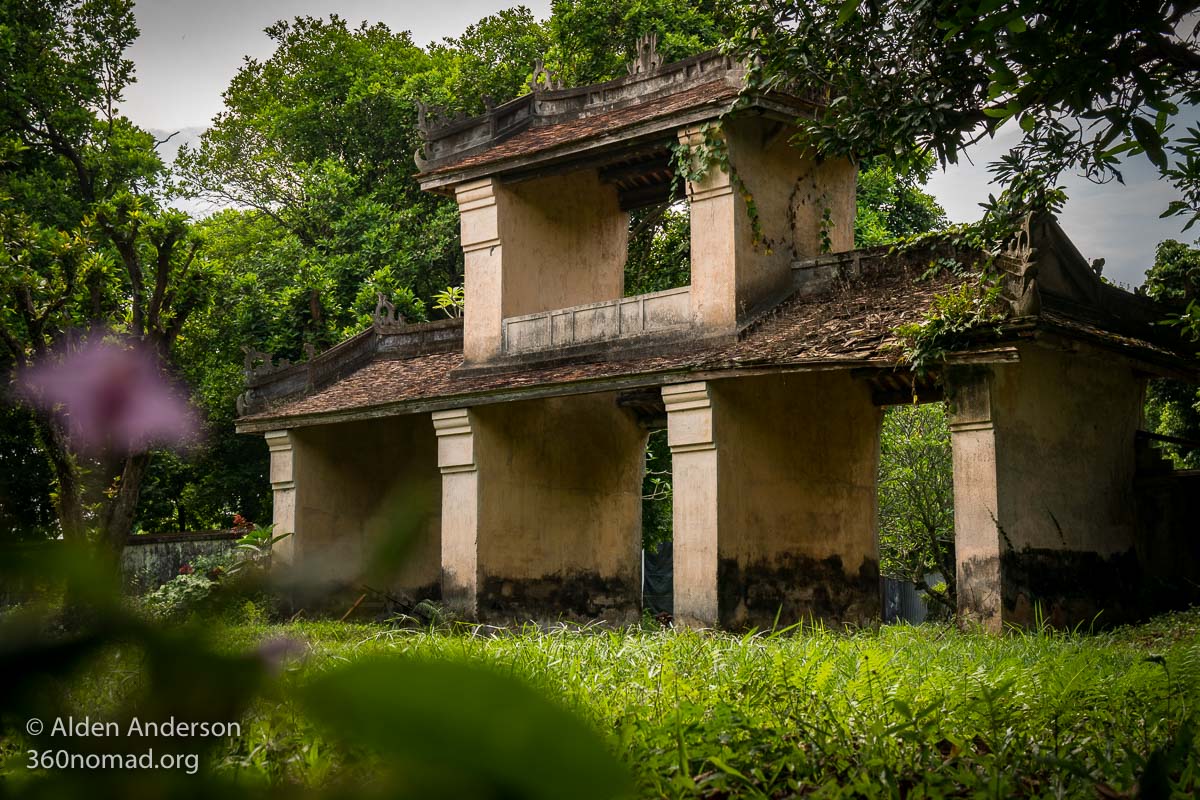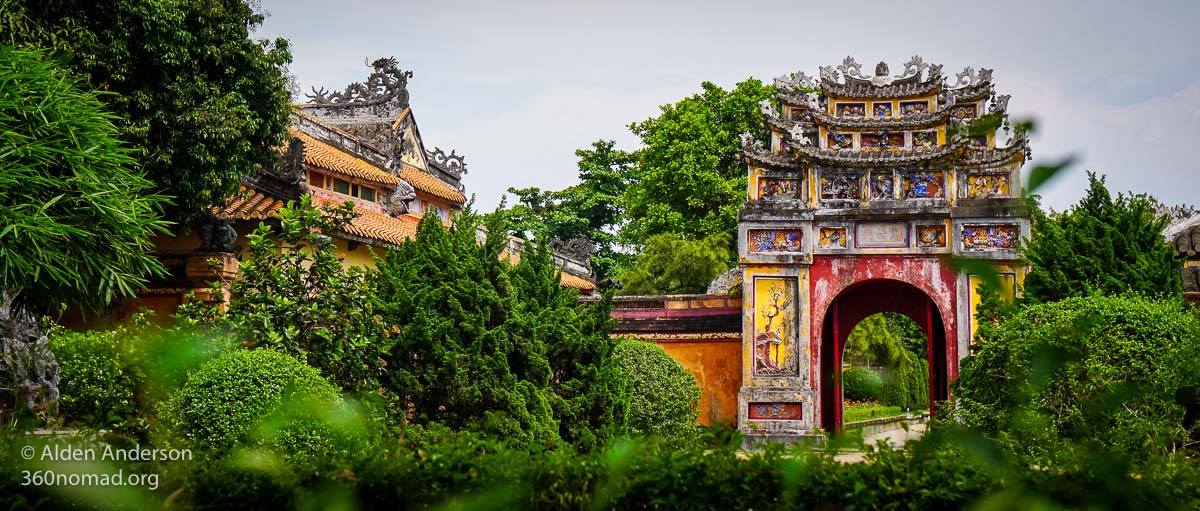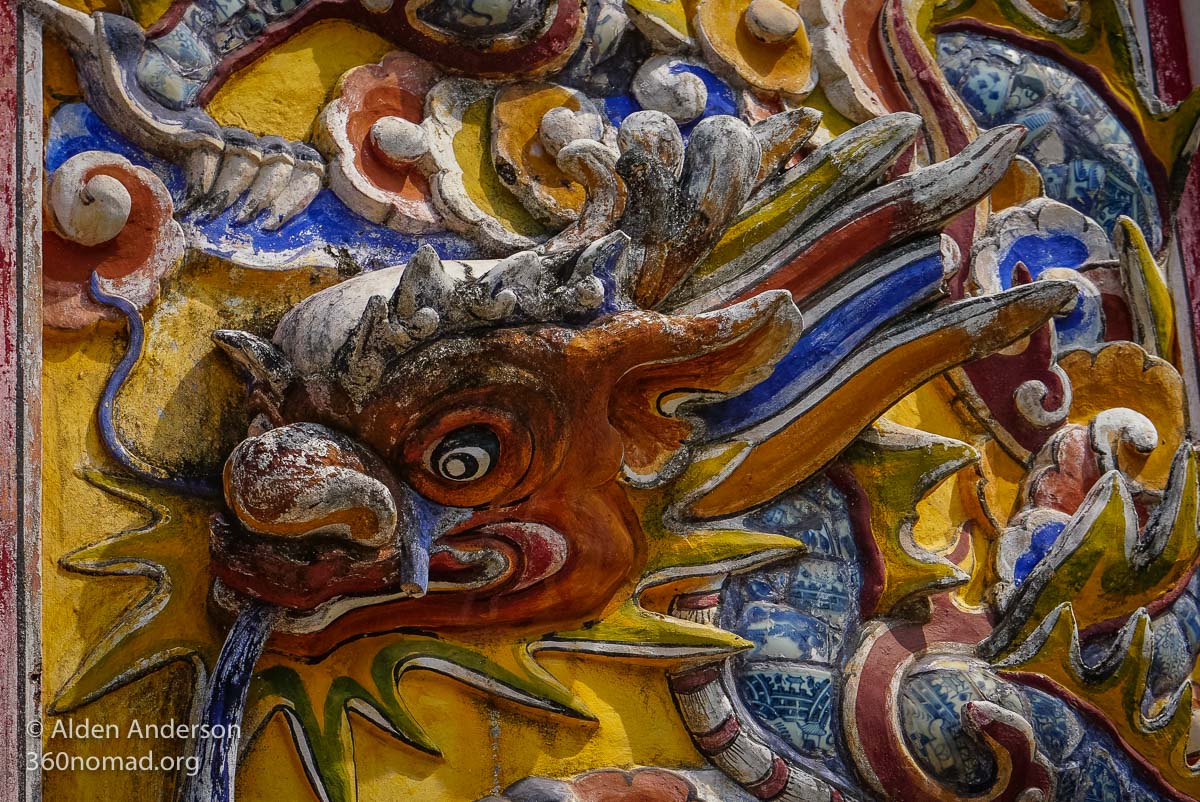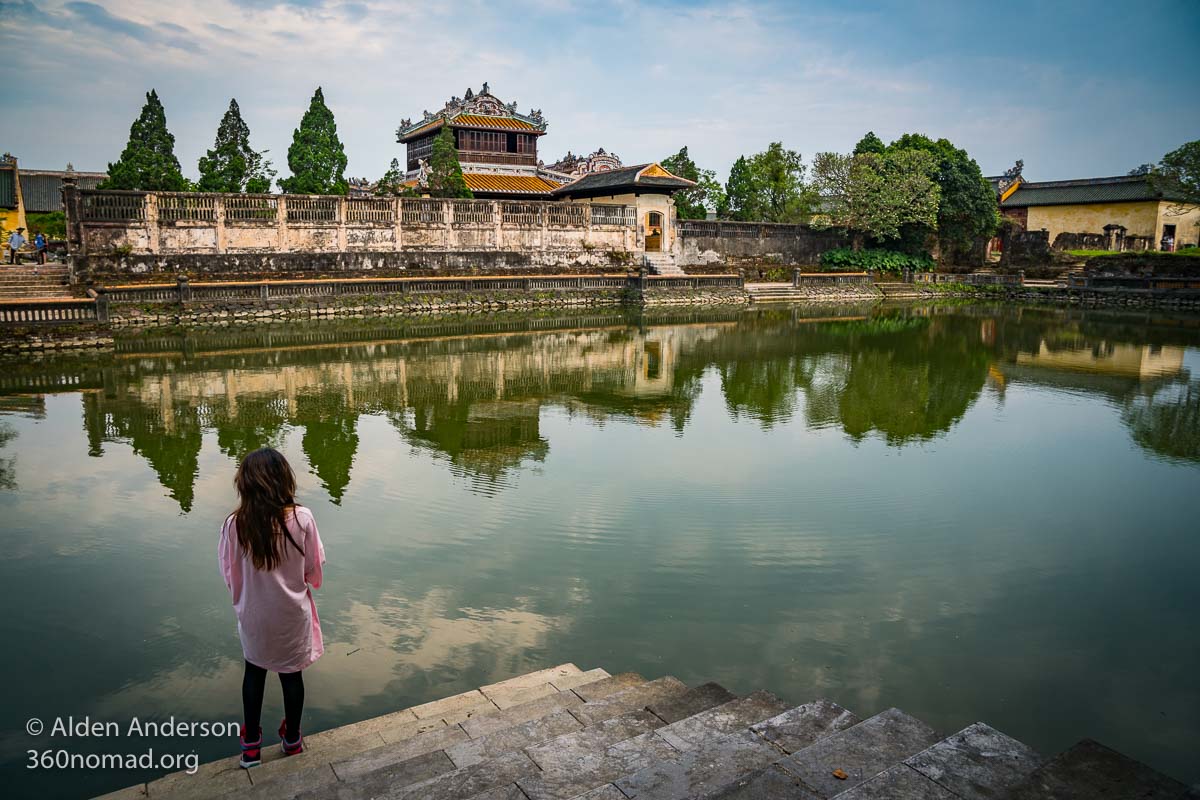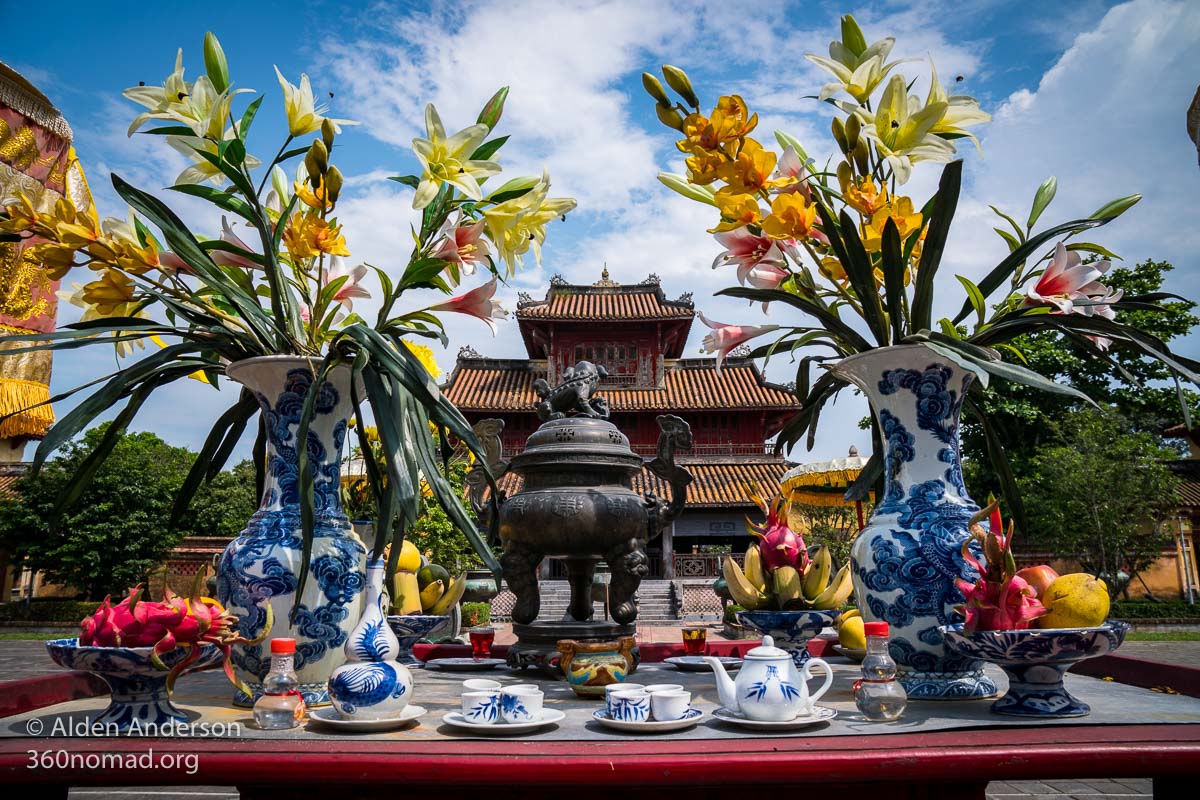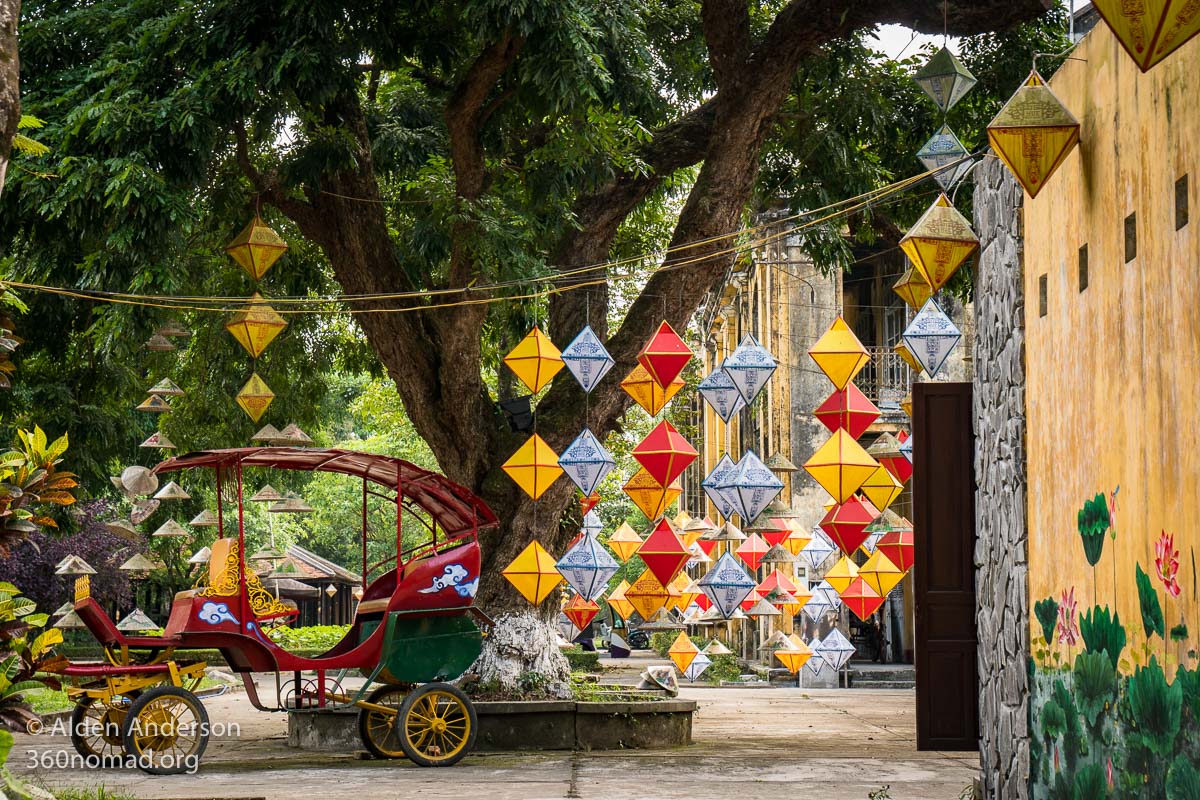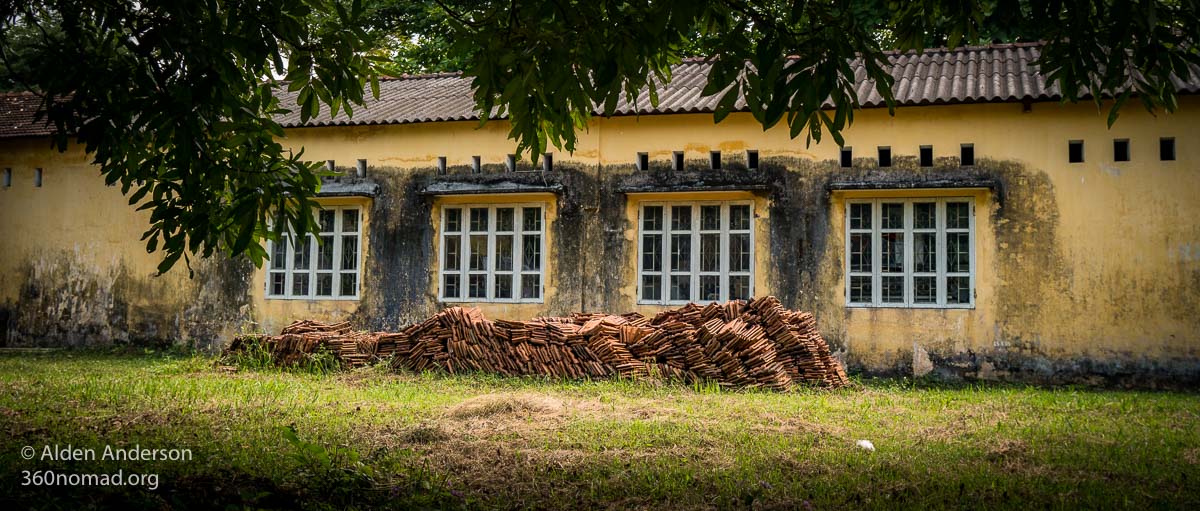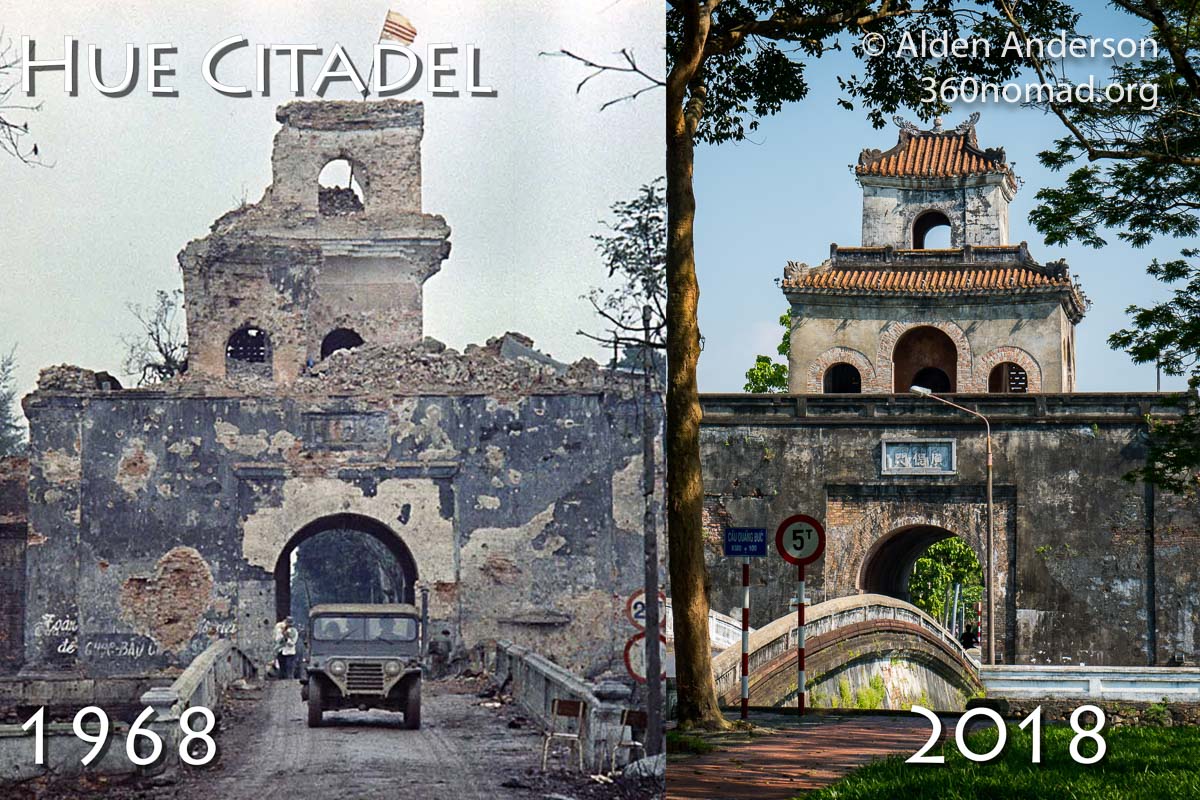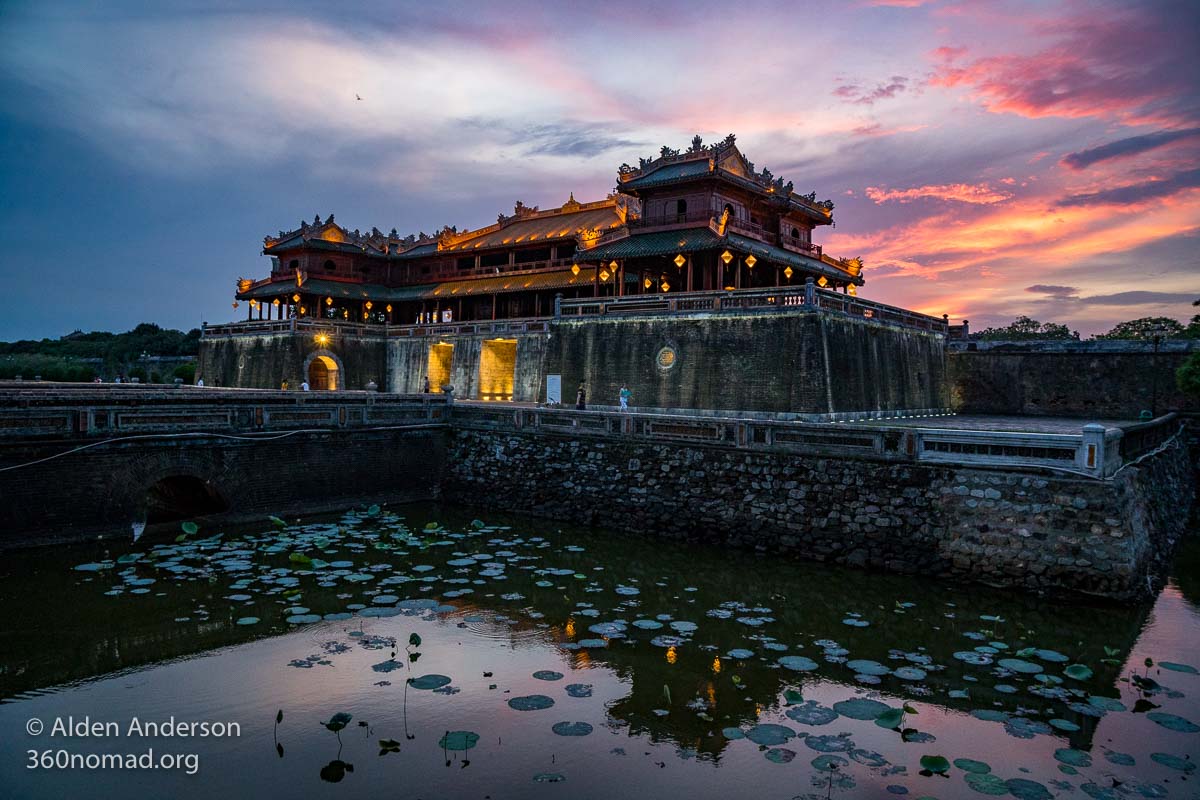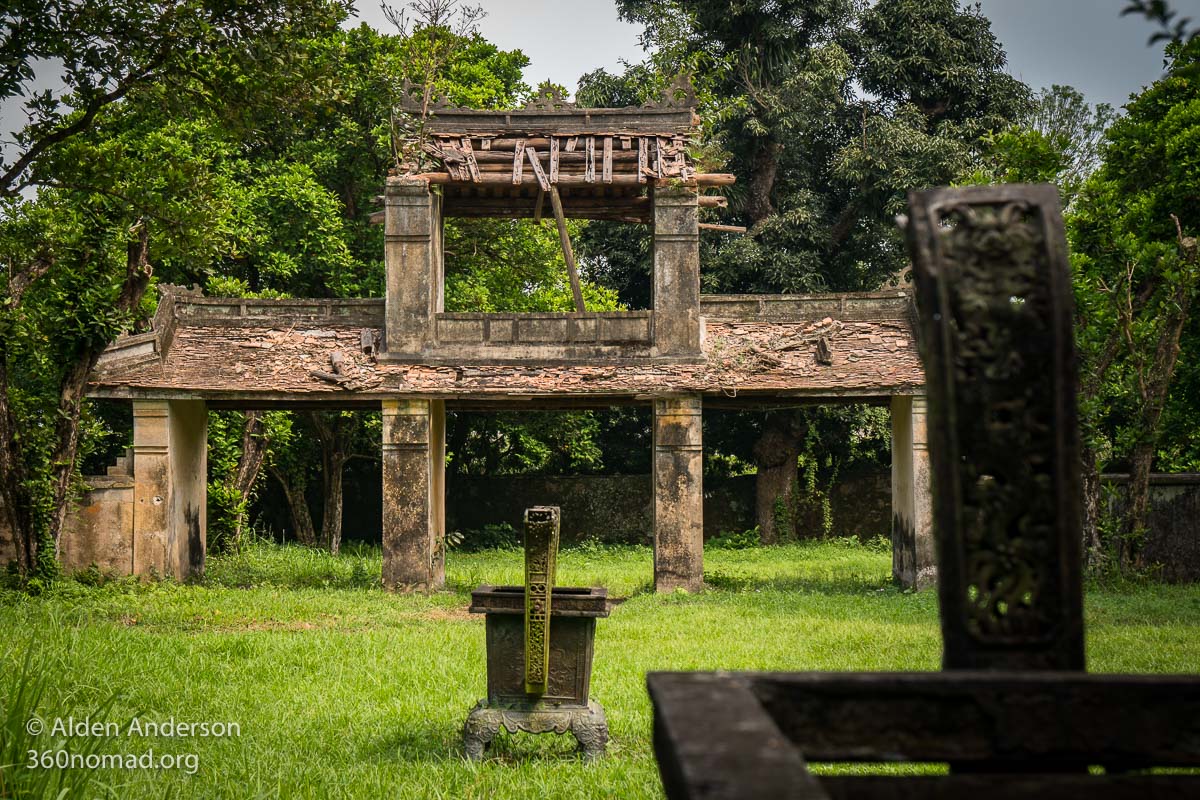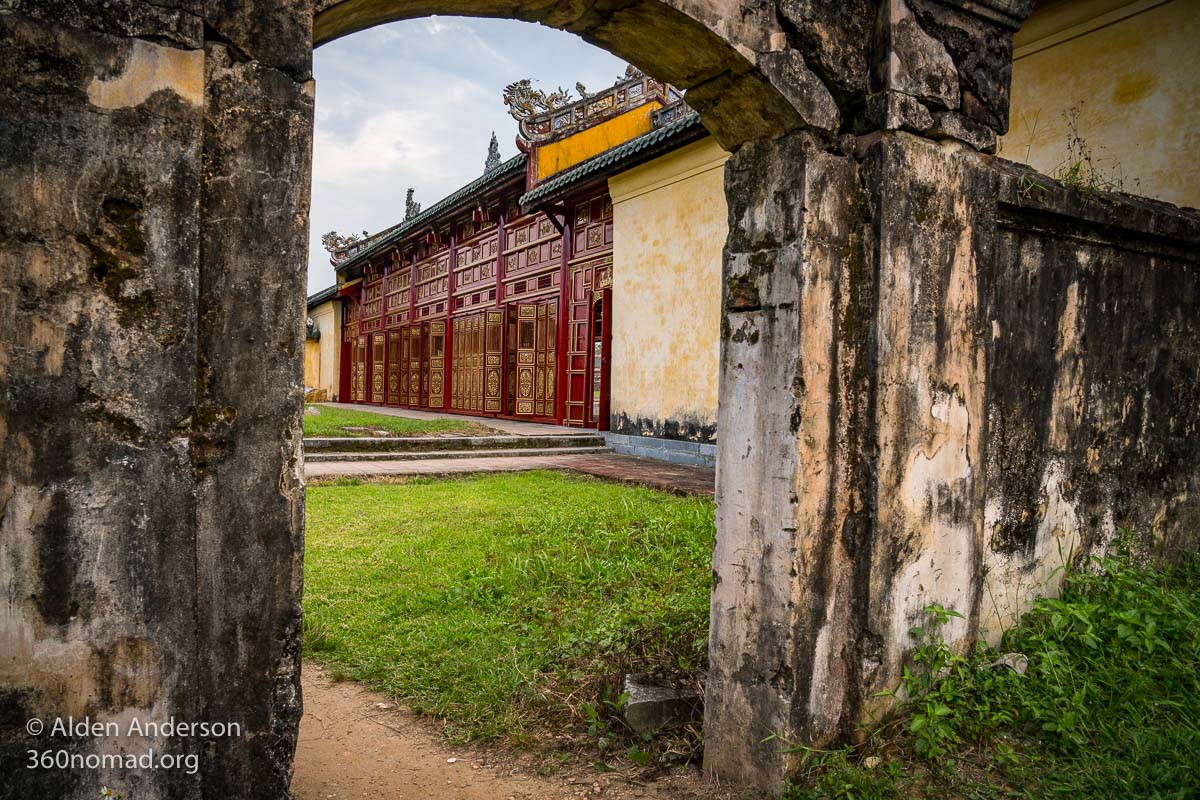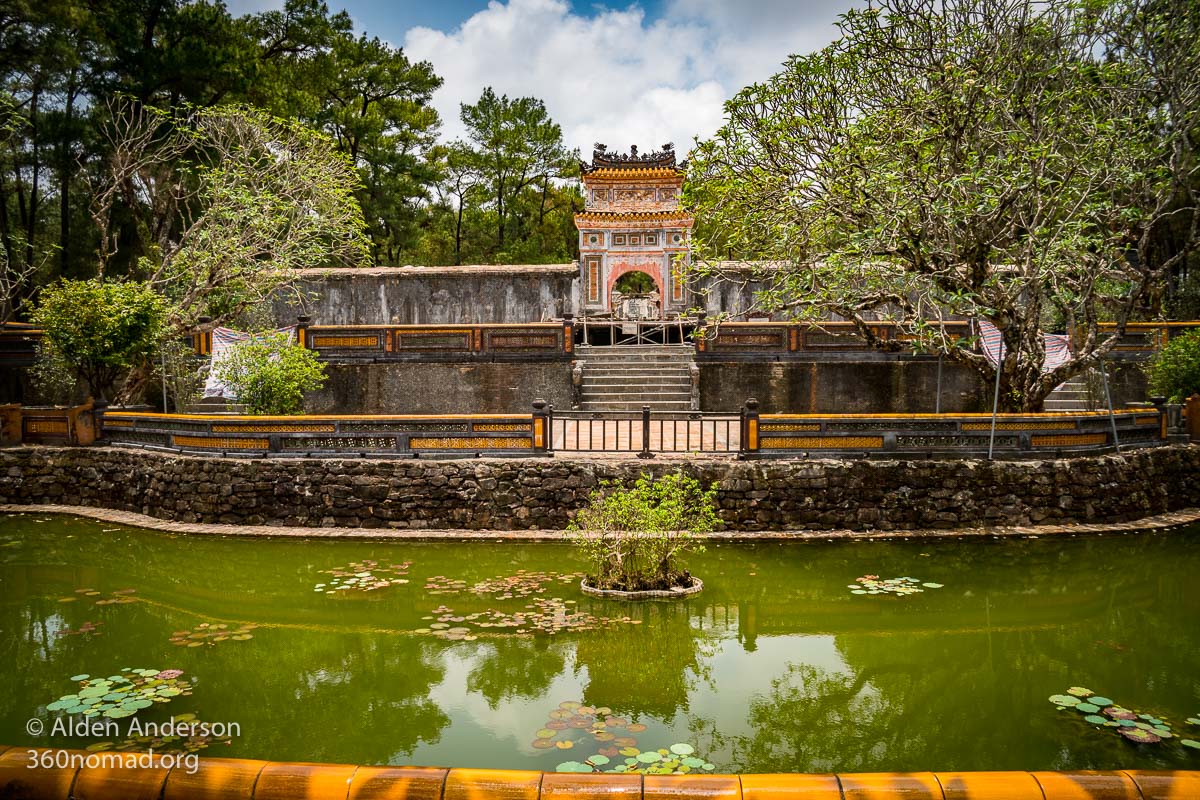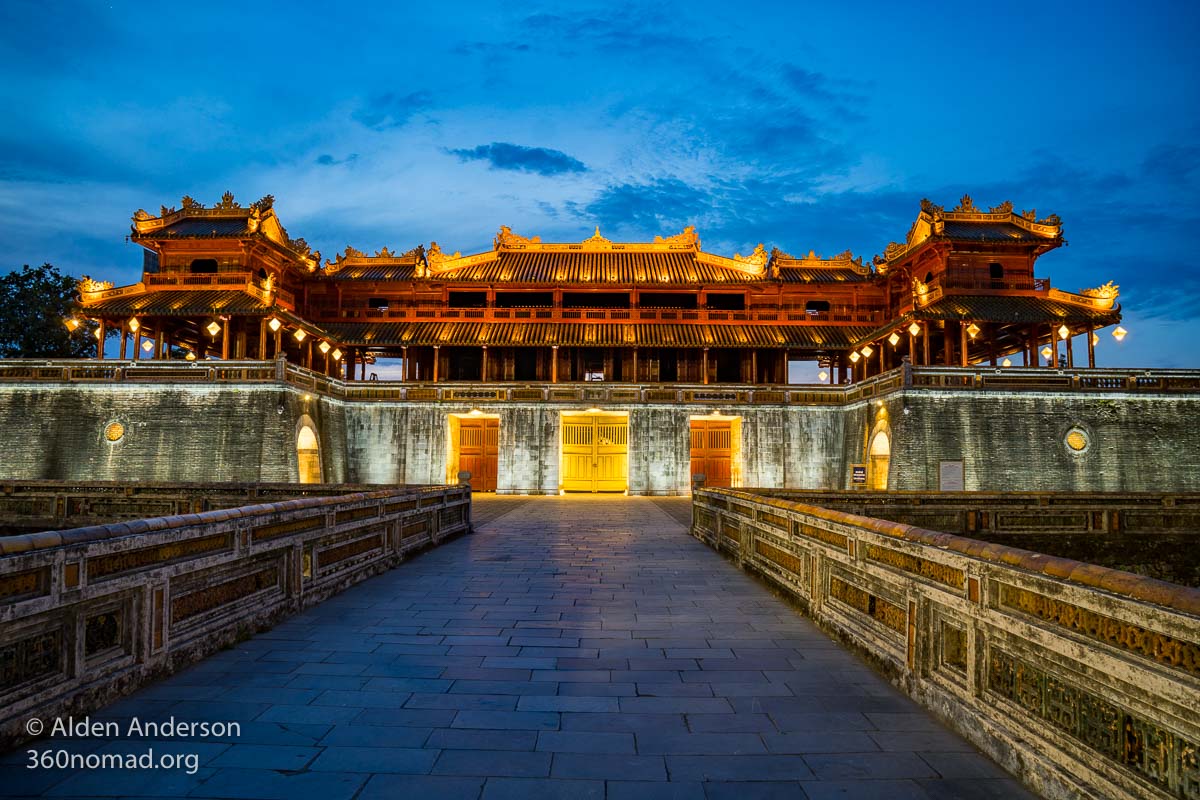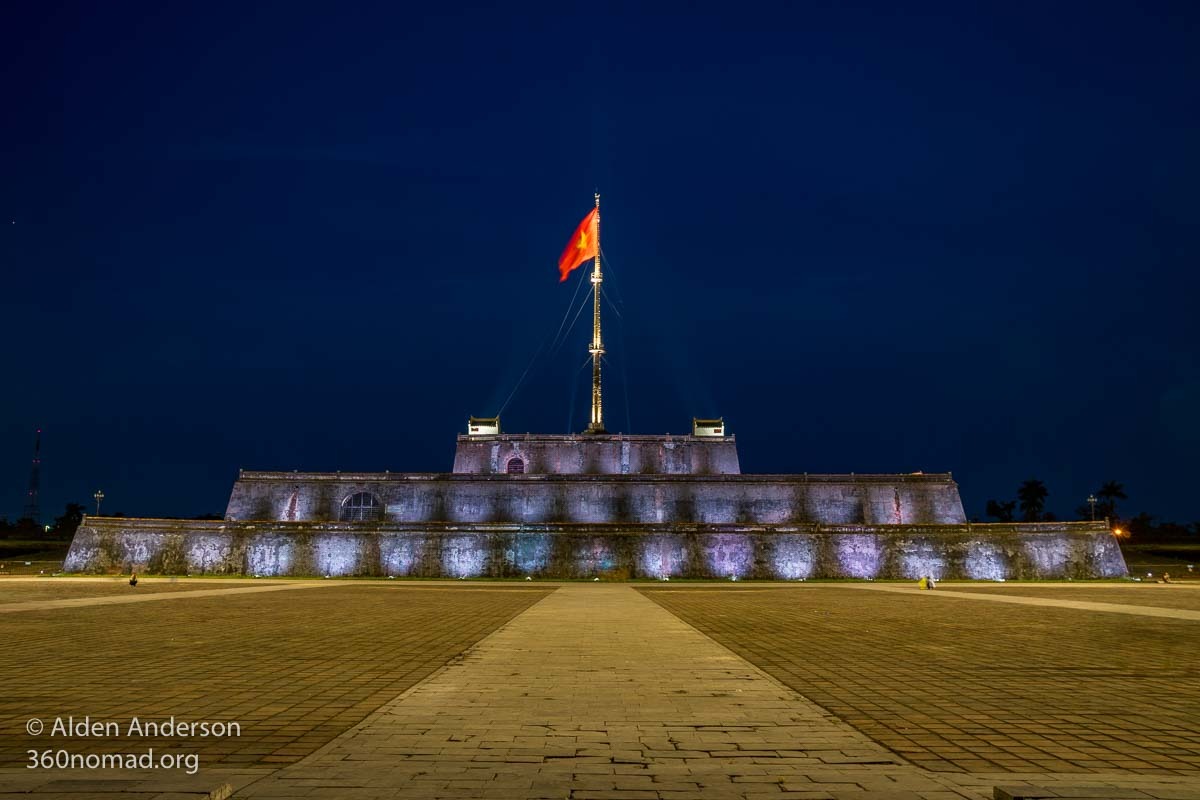The Hue Citadel, thick walls lined with watchtowers, surrounded by a moat, topped with cannons. Fortifications that surrounded the ancient Imperial City of Vietnam, back when emperors ruled and the Vietnamese still wrote with Chinese influenced characters. The Imperial City Huế, a witness to the long and rough modern history of Vietnam beginning over 200 years ago. Hue’s defining feature.
Huế (pronounced “Hway” or “Who A”) was once the seat of the Nguyễn Dynasty and the ancient capital city of Vietnam for almost 150 years, from 1802 to 1945 when the capital was moved to Hà Nội under the new Revolutionary government headed by Ho Chi Minh. It’s a city with lots of history, the highest concentration of historic structures in all of Vietnam; all centered around the heart of the city, Hue’s Citadel.
Hue Citadel
To understand the Citadel and the Imperial City Hue is to understand a piece of history in Vietnam, a piece of history closely linked with modern Vietnam. For it was here that 13 Emperors lived, 13 Emperors of the Nguyen Dynasty, Vietnam’s last. A dynasty founded on an alliance with the French, that would soon affect all aspects of society, from coffee, architecture, culture, food, education, even the written language. It all started with Emperor Gia Long, the Hue Citadel, and Hue’s Imperial City.
The Citadel is entered by crossing one of its stone bridges spanning the moat surrounding it.
Most old buildings were destroyed during The Battle of Hue in 1968, one of the longest and bloodiest battles during the Vietnam/American War. Only 10 major structures remained out of 160. However, a lot of restoration and reconstruction has occurred and is still ongoing.
Some people like to see everything fully rebuilt, perhaps to get a feel for what it might have been like. But sometimes old structures are the most beautiful. One of my favorite places in the Imperial City Huế is a small un-restored section with an old mysterious feel. A small secret tucked away, where, if you close your eyes and open your imagination you might just hear the voices of Gia Long, or Minh Mang, whispering through the overgrown ferns and crumbling gates.
Purple Forbidden City
The Purple Forbidden City, colloquially known as the Imperial City Huế is a walled, moated city inside the Citadel and the seat of the ancient Nguyen Empire for almost 150 years. It is modeled after the Forbidden City in Beijing and you will see many Chinese influences contained within its walls starting with the main entrance gate. The Meridian gate.
The Meridian Gate dominates the entrance to the Imperial City Huế and is the only gate you can enter through (you can exit through numerous other gates).
The Hue Citadel and Forbidden city were constructed under the first emperor of the Nguyen Dynasty. A Dynasty that formed the borders of a country that still holds today. The man who gave birth to a unified Vietnam. A man who selected the site of the Citadel and oversaw its construction. A man Named Gia Long, the first emperor of a new Vietnam.
The Nguyen Clan had existed already for almost 1,000 years as a prominent family in the South. With the final capitulation of the Tây Sơn dynasty, Nguyễn Ánh had proclaimed himself Emperor and with it adopted the name of Gia Long. Thus the Nguyen Dynasty was established.
Construction on the Hue Citadel began in 1804 after the site was selected and approved to be auspicious for the newly united Vietnam
Walking around inside the Imperial City reading the signage and dates of construction it’s clear to see that each subsequent emperor added to the royal temples and gates within the Imperial City.
You will notice lots of Chinese influence everywhere you look in the Imperial City. All of the writing at this time was in Chữ Nôm a script based on Chinese characters. It wasn’t until the early 20th century that the current alphabet using Latin characters (chữ quốc ngữ) was fully adopted under French Colonial rule.
Dragons adorn every gate and most stairs. The Chinese Dragon is a symbol of the masculine, and one of power and strength.
In addition to lots of Chinese influence, you’ll also see French influence. Most ostensibly in the Colonial architecture.
As the 19th century wore on the French exerted more and more control over Vietnam, until the last emperor of Vietnam, Minh Mang was no more than an emperor in title only, a puppet emperor under a French-Ruled Indochina.
The Hue Citadel withstood the comings and goings of the Nguyen Dynasty and for the most part the French Colonial Rule. That all changed in February 1968.
Hue Citadel — The Vietnam War
During the Tet offensive in February 1968 the citadel was the last stronghold of the North Vietnamese Army (NVA) before they withdrew from the city. For 26 days intense building to building combat took place between the NVA and US Marines in the longest and bloodiest battle of the Tet Offensive. Initially, the Citadel was spared from bombing and artillery shelling by the US military to preserve the historic structures. But as the battle and casualties intensified all bets of historical preservation were off and the Citadel was bombed and shelled until the NVA finally withdrew, less than a dozen historical structures were left.
“We had to blow our way through every house. It’s a shame we had to damage such a beautiful city.” US Marine (Battle of Hue).
One of the structures miraculously spared from the intense bombing during the Tet offensive in 1968 was the main entrance to the Imperial City, the Meridian Gate.
For more information on the Vietnam War and how it affected Hue and the Citadel, watch the excellent award-winning PBS documentary “The Vietnam War” by Ken Burns & Lynn Novick. It’s incredibly enlightening and has interviews with soldiers on both sides. It really paints a clear picture of all the factors involved including the path of French occupation leading up to the war. The episode featuring the citadel and the Tet offensive is: Episode 6 “Things Fall Apart” (January 1968 – July 1968)
Guided Tours of the Imperial City
Inside the Imperial City Huế, there are some explanations in English French and Vietnamese near pretty much all of the buildings, but it’s brief. If you would like to get a more in-depth view of the history you might want to hire a certified guide. Inquire at your hotel ahead of time, or take your chances and find one at the Imperial City itself. For a certified guide, you won’t have to pay an additional entry fee for him/her.
Hue Citadel — Entrance Fee
It’s free to visit the Hue Citadel itself and walk around inside. There are many coffee shops, stores, restaurants and accommodation options and a few museums. It’s a great place to stay if you want a quieter experience away from the partying and rivalry of the Pham Ngu Lao walking street across the Perfume River.
Once inside the Citadel, you can see the walls and moats of the Imperial City, a walled moated city within the walls of the Citadel. To get inside you’ll need to pay the entrance fee.
Imperial City Hue — Entrance Fee
Entrance Fee: 150,000 VND (~$6.50 USD) Children 7–12: 30,000 VND
Hours: 8:00 AM to 5:30 PM (10:00 PM Thursdays)
Plan to spend between 2 to 5 hours inside the Imperial City depending on how interested you are in reading the signs and taking pictures. I was surprised at how much there is to see! Get there earlier in the morning to avoid the crowds and heat.
There is a lot of walking involved once inside the Imperial City. If it’s really hot out there is the option to hire a 7 seater electric cart to drive you around. Either way I do recommend getting an early start to avoid the midday heat, especially in the summer.
Imperial City & Royal Tombs Combo Tickets
If you are in Hue for more than a day you might consider buying the combo ticket if you plan on visiting the tombs as well. Tu Duc Tomb is my favorite of the Hue Tombs but is only available with the combo ticket if you purchase the 4 Site Ticket.
You must visit all sites within 2 days of purchasing the ticket!
3 Site Route:
Entrance Fee: 280,000 VND
Children 7–12: 55,000 VND
1. Imperial City
2. Khai Dinh Tomb
3. Minh Mang Tomb
4 Site Route:
Entrance Fee: 360,000 VND
Children 7–12: 70,000 VND
1. Imperial City
2. Khai Dinh Tomb
3. Minh Mang Tomb
4. Tu Duc Tomb
More information and pictures of the Tu Duc Tomb here.
The Citadel at Night
The Citadel is beautiful light up at night with its centerpiece, the Meridian Gate. You cannot enter the Imperial city but you can enjoy the beautifully illuminated gates and walls. You might not see many foreigners here but locals of all ages can be seen enjoying the evening in the park-like atmosphere in front of the Imperial City.
A wide open area inside The Citadel where locals exercise or just hang out. A long exposure effectively “erased” most of the people. The ramparts are lit up purple for The Purple Forbidden City”

